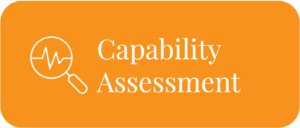Introduction
Overview of the current state of Australia’s building and construction sector
In Part 1 of this series, we explored the increasing rate of insolvencies within the construction sector, recent legislative reforms, and the rigorous vetting of sustainable practices that are redefining the procurement landscape. If you missed it, you can find Part 1 here.
Now, in Part 2, we turn our attention to the financial challenges that are reshaping procurement strategy, such as rising interest rates and material cost volatility. We also discuss the rise in consumer protection measures and the role of analytics in enhancing procurement processes. Plus, we delve into the crucial questions every procurement and contract manager should be considering these industry trends.
Trend 4: Enhanced Consumer Protection Measures
The rise in consumer protection measures and quality standards
Australia’s building and construction sector is witnessing a significant enhancement in consumer protection measures, with a pivotal shift toward stringent quality and safety standards. These measures reshape how procurement professionals approach product selection, service agreements, and contractor engagement. The updated legislation emphasises the quality and longevity of construction projects, from introducing hefty penalties for non-compliance with unfair contract terms to rigorous enforcement of building standards.
Procurement teams are now tasked with ensuring that all elements of the construction supply chain, from materials to labour, comply with enhanced consumer protection laws. This entails reviewing supplier qualifications, certifications, and past compliance records comprehensively. The procurement process has evolved beyond cost-saving measures to become a guardian of industry standards, advocating for the end-users interests by ensuring quality and adherence to regulations. Engaging with suppliers who consistently meet or exceed these standards is no longer just best practice but a regulatory mandate.
Impact on quality assurance and safety protocols
The augmented focus on consumer protection inevitably translates to increased due diligence in quality assurance and safety protocols. Strategic procurement is critical in aligning internal processes with external compliance requirements. This integration ensures that every purchased product or contracted service meets the stringent safety and quality standards set forth by the latest reforms.
For procurement professionals, this means establishing and enforcing robust quality management systems, conducting regular audits, and insisting on vendor transparency throughout the product lifecycle. It also requires an active engagement in risk assessment activities to preemptively address areas where potential quality or safety issues could arise.
Moreover, the new legislative landscape necessitates that procurement contracts include:
- Explicit terms regarding compliance with safety standards.
- The scope for regular quality checks.
- Clear mechanisms for issue resolution.
This proactive stance is vital to mitigate the risks of costly post-construction litigations and to uphold the industry’s integrity. By embedding quality and safety into the procurement strategy, businesses protect consumers and build a foundation for sustainable growth and industry respect.
Trend 5: Margins are Being Squeezed, as Building Gets More Costly
How interest rates are reshaping project financing
The financial landscape for Australia’s building and construction sector is significantly reshaped by rising interest rates, directly affecting project financing. As the Reserve Bank of Australia responds to economic pressures by adjusting the cash rate, the cost of borrowing escalates. This change necessitates a strategic reevaluation of project financing approaches among procurement professionals.
Strategic procurement must now incorporate interest rate forecasts into their financial modelling, ensuring that the economic viability of projects is assessed with a long-term view of interest rate trends. Interest rate hikes can tighten the affordability of construction projects, leading to renegotiations, project scoping adjustments, and a more conservative approach to new ventures. For procurement, this means securing favourable loan terms and seeking innovative financing solutions that buffer against rate fluctuations.
Project budgeting and cost management in a high-rate environment
In an environment where high-interest rates are becoming the new norm, strategic procurement must grapple with tightened project budgets and intensified cost management challenges. The budgeting process now requires a more dynamic approach, accounting for potential increases in financing costs that could affect project margins and overall feasibility.
Procurement teams must work closely with finance departments to create resilient and adaptable budgets with contingency plans accommodating rate-induced cost increases. This involves exploring fixed-rate borrowing, where possible, to hedge against future rate rises and incorporating flexible budgeting practices that can respond to unexpected financial stress. Accurate forecasting and regular budget reviews become critical components in a strategy designed to manage the risks associated with a high-interest rate economy.
Material cost volatility and contract flexibility
The building and construction sector continues to experience material cost volatility, exacerbated by global economic instability, supply chain issues, and domestic market dynamics. The procurement function is thus on the front lines of managing these uncertainties.
Contract flexibility has become an essential tool for managing the risks associated with price fluctuations. Procurement professionals must ensure contracts contain clauses allowing price adjustments or reviews based on material cost changes. This could mean indexing material costs to market rates or establishing price variation clauses tied to recognised price indices.
Robust contract management systems are necessary to track market movements and trigger contract reviews when needed. In managing these complexities, strategic procurement professionals safeguard project timelines and budgets, ensuring that cost escalations do not derail project objectives or financial outcomes.
What’s the Answer to These 5 Big Building & Construction Trends?
Leveraging data analysis and spend analytics in procurement processes
Data analysis and spend analytics have emerged as crucial tools for procurement processes. Strategic procurement professionals increasingly adopt analytics to gain insights into spending patterns, contractor performance, and regulation compliance. These tools allow for a more granular understanding of where money is being spent, which helps identify opportunities for cost savings, better contract terms, and investment in more sustainable practices.
Procurement analytics can provide predictive analysis to forecast future market trends, such as price fluctuations in raw materials or changes in labour costs. By leveraging data, procurement teams can negotiate better terms with suppliers, optimise inventory levels, and plan for potential market shifts. Moreover, compliance analytics enable tracking and reporting on contractors’ adherence to safety and quality standards, which is essential under the tighter regulatory framework.
Examples of data improving cost outcomes
Using spend and contract analytics has been proven to improve cost outcomes and operational efficiency significantly. For instance, by analysing historical data, procurement teams can identify suppliers with chronic delays or quality issues and make informed decisions on contract renewals or sourcing new vendors.
Additionally, contract analytics can reveal patterns in supplier behaviour, such as frequent cost overruns or non-compliance incidents, prompting procurement managers to institute corrective measures or seek alternative partnerships.
One practical application of analytics is managing large-scale construction projects involving numerous subcontractors. Here, analytics can track each subcontractor’s performance against their contract, ensuring project milestones are met within the agreed budget and timeline. This oversight is vital in preventing project overruns and allocating resources efficiently.
Questions Every Procurement & Contract Manager Should Be Asking Themselves
The evolving Australian building and construction environment necessitates that procurement and contract managers ask themselves a refined set of questions to stay at the forefront of industry best practices. Some of these may include:
- How are current market trends reflected in our procurement strategy?
- What systems are in place to ensure compliance with updated unfair contract terms legislation?
- How do we verify the sustainability claims of our suppliers?
- How are we mitigating the risks posed by the high rate of industry insolvencies?
- Are we effectively leveraging data and technology to maximise efficiency in our procurement processes?
- How can we ensure our procurement decisions align with national green initiatives and regulations?
- What protocols do we have for ongoing supplier evaluation to maintain high quality and safety standards?
- How do our procurement strategies account for current and forecasted interest rate changes?
- What contingency plans do we have for labour shortages and material cost volatility?
These questions are not merely a checklist but a framework for strategic decision-making and risk assessment. They compel procurement and contract managers to continuously evaluate their strategies against external market forces and internal business goals. By addressing these questions, managers can craft procurement practices that support business resilience, competitive advantage, and compliance with legal standards.
Moreover, these questions help prioritise efforts in areas like due diligence, market research, and continuous improvement. They ensure that strategic procurement is not just a support function but a critical component in managing project risks, cost optimisation, and regulatory adherence. This perspective transforms procurement from a cost centre into a value generator, reinforcing its role in steering the company through economic uncertainty and regulatory change.
Comprara: Excellence in Building & Construction Procurement
At Comprara, we’re more than just a procurement consultancy — we are your partners in navigating the intricate procurement landscape in the complex Building & Construction sector.
Services
Our specialised services span a broad spectrum of procurement activities. From deep-dive market analysis, benchmarking, and policy formulation to tactical procurement delivery, we are poised to deliver outstanding results.
- Consulting and Strategy: Our top-tier procurement strategists and advisors are at the forefront, ensuring effective strategy formulation and efficient implementation.
- Analytics: We will provide unparalleled spend analysis, automated insights, and dynamic visualisation, all geared around your needs in context of the Food & Hospitality sector.
- Capability: Elevate your team’s potential with our world-class assessments, and immersive blended learning experiences.
Why Choose Comprara?
- Rigorously tested and practical methodologies tailored for the sector.
- A team seasoned with extensive Building & Construction industry insights.
- Cutting-edge, proprietary spend analytics designed with your niche needs in mind.
- Commercial terms that align with your business dynamics.
References
API Magazine. (2023). National builder’s collapse leaves millions in debts, costs 200 jobs. https://www.apimagazine.com.au/news/article/national-builders-collapse-leaves-millions-in-debts-costs-200-jobs
Australian Bureau of Statistics. (2023). Building activity, Australia. https://www.abs.gov.au/statistics/industry/building-and-construction/building-activity-australia/latest-release
Australian Bureau of Statistics. (2023). Building activity, Australia, Dec 2022. https://www.abs.gov.au/statistics/industry/building-and-construction/building-activity-australia/dec-2022
Australian Bureau of Statistics. (2023). Construction work done, Australia, Preliminary. https://www.abs.gov.au/statistics/industry/building-and-construction/construction-work-done-australia-preliminary/mar-2023
Bowes, M. (2023, October 28). Construction industry hit hard as insolvencies soar. news.com.au. https://www.news.com.au/finance/business/other-industries/construction-industry-hit-hard-as-insolvencies-soar/news-story/88719e01ad6c31d0efec62ead00b7757
CHAS. (2023). How can construction companies respond to greenwashing? PBC Today. https://www.pbctoday.co.uk/news/hr-skills-news/how-can-construction-companies-respond-to-greenwashing/134599/
Dervisevic, H. (2023, September 28). Hundreds of Australian construction firms have collapsed. Here’s what to do if your builder goes bust. ABC News. https://www.abc.net.au/news/2023-09-28/builders-collapsing-state-breakdown-of-legal-rights/102878514
Francis, C. (2023, November 7). Builders fall like dominoes, as NSW launches inspection blitz. API Magazine. https://www.apimagazine.com.au/news/article/builders-fall-like-dominoes-as-nsw-launches-inspection-blitz
Jeffrey, D. (2023, June 30). Two Australian construction companies are collapsing every day. This is why – and what you can do about it. 9News. https://www.9news.com.au/national/building-construction-companies-collapse-australia-why-is-it-happening-what-can-you-do-explained/bac174fc-9263-4077-adac-98cd9b10c07c
Lander & Rogers. (2023). The changing legislative landscape of Australia’s construction sector in FY24. https://www.landers.com.au/legal-insights-news/changing-legislative-landscape-of-australias-construction-sector-fy24








